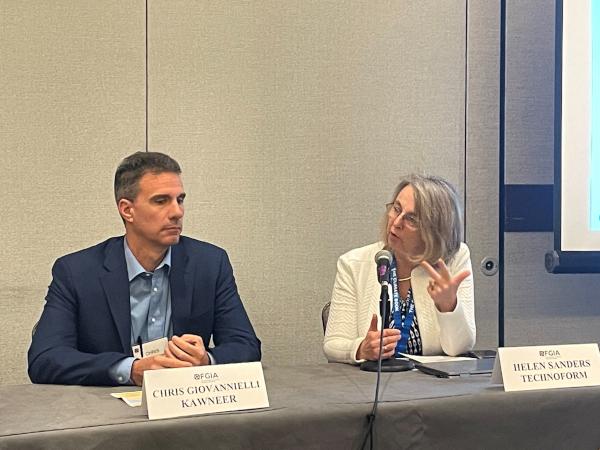
Date: 22 February 2023
The panel, “A Quality Systems Approach to Excellence in Commercial Glazing,” was moderated by Terry Schaefer (Administrative Management Systems - AMS) and featured three subject matter experts: Jeff Dalaba (Administrative Management Systems - AMS), Helen Sanders (Technoform) and Chris Giovannielli (Kawneer).
Schaefer focused his questions for the panelists on the importance of the installation process in relation to the performance of these glazing systems. Experts also discussed the risks created by poor commercial installations and how a systems approach can improve outcomes and helped participants better understand the importance of connecting installation practices to overall building envelope performance to provide intended performance. They also helped participants recognize common failures that occur and the controls needed to elevate installer performance.
How important is competency and quality performance?
“Competency and quality performance is really critical,” said Sanders. “Focus on installation quality. The insulating glass (IG) lifetime can be impacted if the edges of the glass aren't supported properly. Edge clearance, compatibility of materials matter.”
Giovannielli agreed, proposing that installers become better when they understand the “why.” “Our installation instructions include that,” he said. “As an architect or building owner, they are focused on performance. Do testing early and validate installation.” Education and training are key, he added. “Educate your workforce. This means additional certification and hands-on testing.”
Dalaba said his organization saw a need for a systems processing approach for glazing contractors, one driven by the industry. “We zeroed in on what a contractor must have, like safety programs in place,” he said. “But the QMS piece is huge. Making sure people remember what the next step is and what they are supposed to be checking.” He also stated that knowing how to correct issues was vital to ensuring they don’t happen again.
How do you know your systems have been installed correctly?
Giovannielli said his company’s systems check for air and water filtration. “All steps are needed in order to meet specs,” he said. “A lot of detail goes into the sequential process. When something is not sealed properly, it is never an easy conversation.”
Sanders pointed out that the jobsite has a lot of variation. “That's why there is a process involved.” Sanders stressed three words: "Plan, Do, Check."
Giovannielli noted he sees many glazing consultants looking at ways to incorporate a QMS. “They are the advocates for the architect or building owner. This adds that extra value,” he said.
Why certify?
Sanders said certification of the installer will help a contractor and team and will ensure some level of risk education. “You know they've got processes in place and that they know what installation looks like,” she said. “They're selling their business to the architect. Architects can manage their risk by having certified installers and glaziers with IG certification.”
Dalaba pointed out the pitfalls of simply relying on one person's knowledge and the necessity of a checklist to follow every time. “You need to build consensus and bring the team together to know what the right steps are,” he said. “Have written procedures and make sure they are followed. We want to create a system of checks and balances.”
He added, “Most contractors want to do the right things. We do workshops and trainings with them” through two programs: Architectural Glass and Metal Technician (AGMT) and North American Contractor Certification Program for Architectural Glass and Metal Contractors (NACC).
In closing, Dalaba commended the industry for striving toward progress. “Through efforts like this panel, we can see the industry is trying to come together and self-improve,” he said.
For more information about FGIA and its activities, visit FGIAonline.org.
 600450
600450














Add new comment